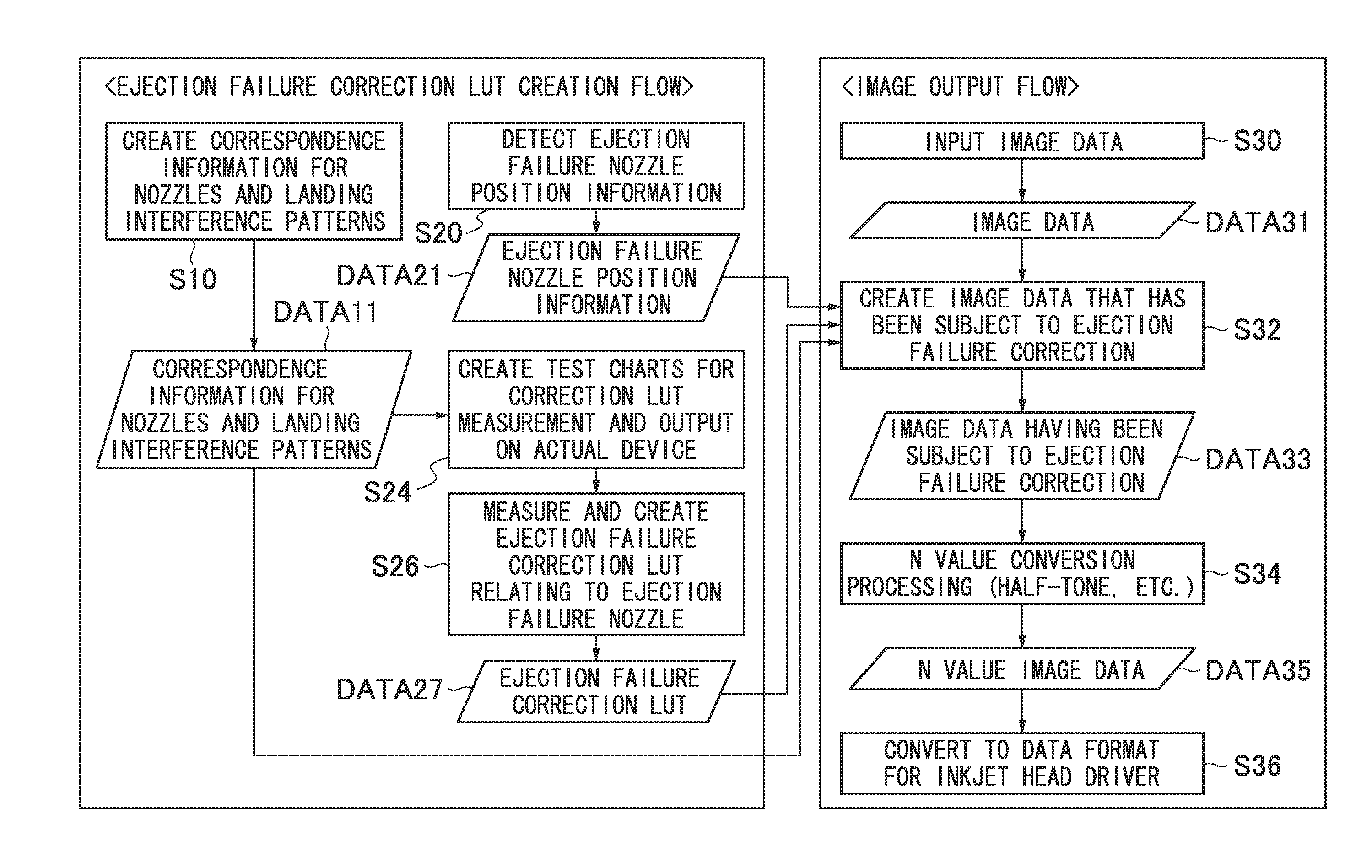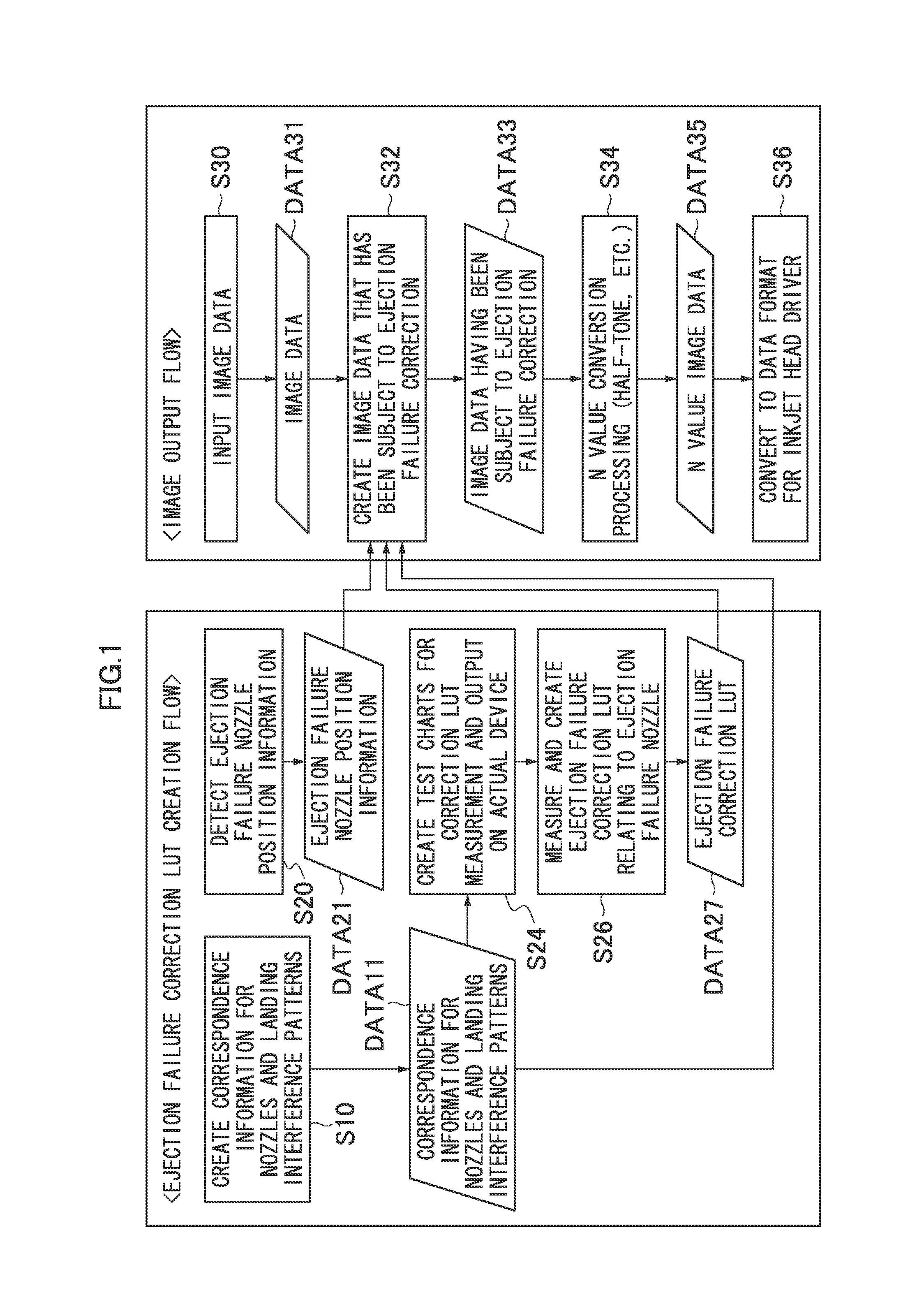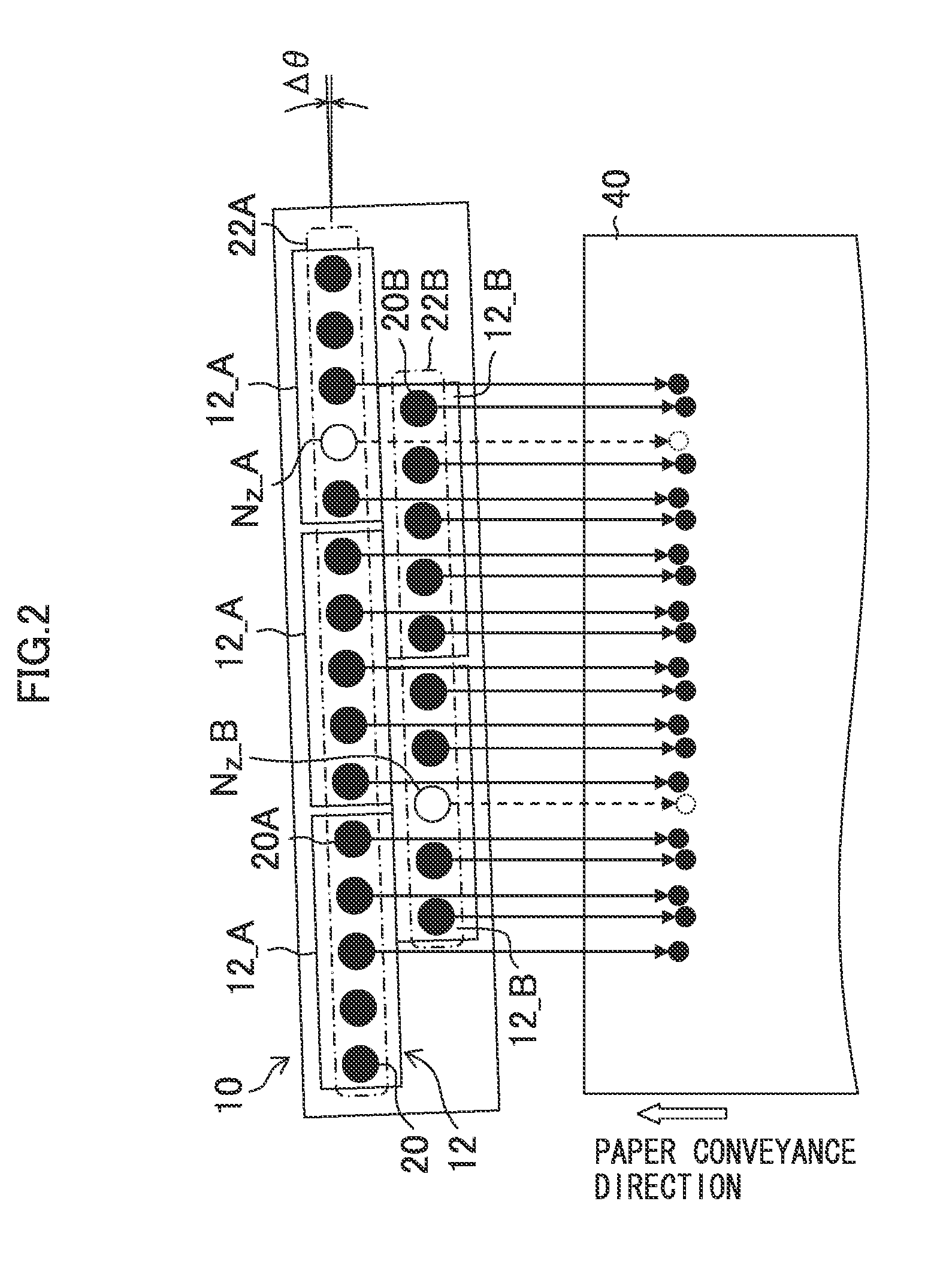Image processing method, image processing apparatus, inkjet image forming apparatus and correction coefficient data generating method
- Summary
- Abstract
- Description
- Claims
- Application Information
AI Technical Summary
Benefits of technology
Problems solved by technology
Method used
Image
Examples
first embodiment
[0070]FIG. 1 is a flowchart of an image processing method relating to one embodiment of the present invention. To give a general description of the overall flow of image correction processing according to the present embodiment, firstly, [1] a test chart for ejection failure correction LUT measurement is output, [2] an ejection failure correction LUT is created by analyzing this test chart, and [3] correction of the image data is carried out using the ejection failure correction LUT thus created. In FIG. 1, steps until obtaining the ejection failure correction LUT (DATA 27 in FIG. 1) are called the “ejection failure correction LUT creation flow”, and steps of actually performing a correction process of the input image data by using this ejection failure correction LUT (S30 to S36 in FIG. 1) are called the “image output flow”.
Description of Ejection Failure Correction LUT Creation Flow
[0071]Firstly, the ejection failure correction LUT creation flow will be described. In the present e...
second embodiment
[0112]In the first embodiment, an example is given in which the nozzles in a head module 12 are arranged in a line shape. In implementing the present invention, the mode of arrangement of the nozzles is not limited to this. The second embodiment describes an example where nozzles are arranged in a matrix fashion. FIG. 6 shows an example of a nozzle arrangement of a head module 50 relating to the second embodiment. If the conveyance direction of the paper 40 is taken to be the y direction and the paper width direction perpendicular to this is taken to be the x direction, the nozzle arrangement of the head module 50 has four nozzle rows which have different positions in the y direction. The lowest level in FIG. 6 is called a first nozzle row, the level above this is called the second nozzle row, the level above this is called the third nozzle row, and the uppermost level is called a fourth nozzle row.
[0113]Looking in particular at each of the nozzle rows, the nozzle pitch Pm in the x ...
modification example 1
[0125]In the first embodiment and the second embodiment, ejection failure correction is carried out by raising the image setting values before and after an ejection failure nozzle. Instead of, or in combination with, the correction of image setting values of this kind, it is also possible to perform ejection failure correction by increasing the dot diameter or raising the droplet ejection density before and after an ejection failure nozzle. Furthermore, in FIG. 1, correction is applied to the image data before the N value conversion processing, but it is also possible to adopt a mode in which correction is applied to image data after the N value conversion processing (image data converted to N values).
PUM
 Login to View More
Login to View More Abstract
Description
Claims
Application Information
 Login to View More
Login to View More - R&D
- Intellectual Property
- Life Sciences
- Materials
- Tech Scout
- Unparalleled Data Quality
- Higher Quality Content
- 60% Fewer Hallucinations
Browse by: Latest US Patents, China's latest patents, Technical Efficacy Thesaurus, Application Domain, Technology Topic, Popular Technical Reports.
© 2025 PatSnap. All rights reserved.Legal|Privacy policy|Modern Slavery Act Transparency Statement|Sitemap|About US| Contact US: help@patsnap.com



